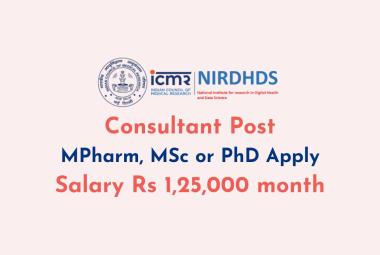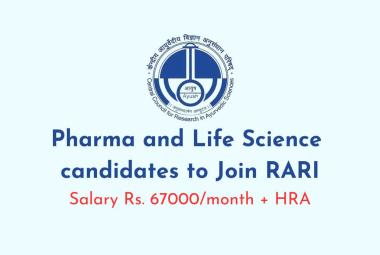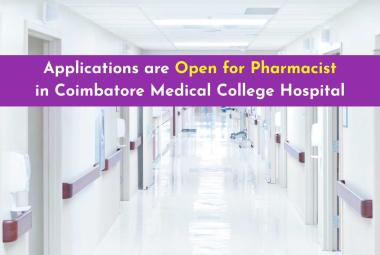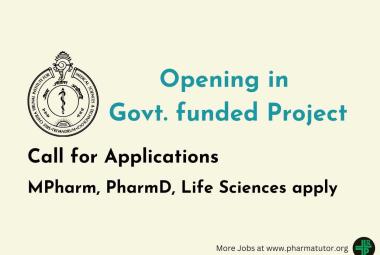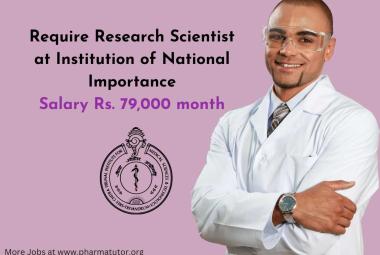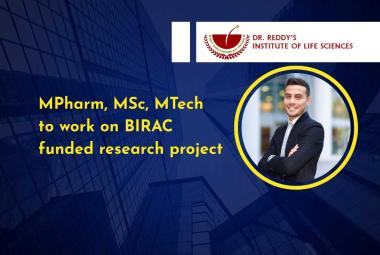{ DOWNLOAD AS PDF }
ABOUT AUTHORS:
Kamshette Sharada*, Poul Bhagwat, Ghodke Amol
Department of Quality Assurance,
Maharashtra College of Pharmacy,
Nilanga, Maharashtra, India.
*sharadakamshette@gmail.com
ABSTRACT
Simply receiving a diagnosis of a rare disease often becomes a frustrating quest, since many doctors may have never before heard of or seen the disease. This is, however, a time of great progress and hope. Biopharmaceutical research is entering an exciting new era with a growing understanding of the human genome. Scientific advances have given researchers new tools to explore rare diseases, which are often more complex than common diseases.
“Who else has this rare disease? How many of us are there? What can I expect now? What is known or not known about this disease?” These are among the questions that patients and family members ask as they become, out of necessity, advocates for themselves or others.
REFERENCE ID: PHARMATUTOR-ART-2219
INTRODUCTION
"Orphan drugs" are medicinal products intended for diagnosis, prevention or treatment of life-threatening or debilitating rare diseases. They are "orphans" because the pharmaceutical industry has little interest under normal market conditions in developing and marketing drugs intended for only a small number of patients suffering from very rare conditions. The growing number of rare diseases awaiting treatment is a public health issue. The scarcity of incentives for medicines manufacturers and the lack of documentation supporting the applications limit the number of new orphan medicines products.
Defining and Tabulating Rare Diseases[1]
This report follows the statutory definition of a rare disease or condition as one that affects fewer than 200,000 people in the United States. As is true of many qualitative descriptions or definitions of magnitude, any operational definition of a term such as “rare” is subjective. Some definitions specify absolute numbers of affected people whereas others specify rates. Japan and, in particular, Australia define “rare” more conservatively than the United States or the European Union. In contrast to the policy of the European Union, the U.S. definition does not specify that a disease condition must be chronically debilitating or life-threatening. In general, however, the committee found that public programs and industry activities tended to concentrate on serious conditions. Defining and counting rare diseases is not straightforward. Countries have adopted different definitions of a rare disease, and researchers are continuously identifying new diseases or disease variants. Therefore, the epidemiology of rare diseases—including the determination of prevalence (the number of people affected at any one time), incidence (the number of new cases in a given year), and patterns of disease (e.g., age distribution) in the population—is inexact.
What is meant of orphan drug?
Orphan drugs are medicines for rare or “orphan” diseases where no or few treatments currently exist. The FDA considers diseases that affect fewer than 200,000 people in the United States to be Orphan disease. Orphan disease status is also applied to disorders that affect more than 200,000 people if the costs of developing and marketing a new treatment drug for the disease are not expected to be recoverable.
It is easier to gain approval for an orphan drug in the United States and the United Kingdom that it is for other types of drugs. Financial incentives may be available to drug sponsors working on the discovery and R&D of new orphan drugs.
Medical orphans[2]
An orphan virus, such as hepatitis G[3], is not linked to a recognized disease. The term was introduced as long ago as 1954 by Melnick, who described ‘. . . new viruses, provisionally called “orphan viruses” (as we know so little to what diseases they belong), from patients suspected of having nonparalytic poliomyelitis’ [4]. The term is not entirely felicitous – a virus that is initially labelled an orphan may eventually find its missing disease. The same could be said of orphan genes and enzymes. For example, several enzymes have catalytic sites capable of being occupied by millimolar concentrations of ethanol [5]; their physiological roles are not known, at least not yet. Orphan receptors are receptors that have been identified from gene sequences but have no known endogenous ligand or physiological function. One such, a member of the family of opioid receptors, is called ORL1 or OP4, although it is gradually losing its orphan status. An endogenous ligand, variously called nociceptin [6] and orphanin FQ [7], has been identified, but even non-selective ligands with high affinities for OP1, OP2, and OP3 receptors have very low affinity for ORL1 [8,9] and its physiological role is not known. On the other hand, there are high-affinity ligands that define subtypes of the ORL1 receptor [10].
Rare Disease Facts and Statistics[11]
Here are a few statistics and facts to illustrate the breadth of the rare disease challenge in the United States and worldwide.
• There are approximately 7,000 different types of rare diseases and disorders, with more being discovered each day.
• 30 million people in the United States are living with rare diseases. This equates to 1 in 10 Americans or 10 percent of the population.
• It is estimated that 350 million people worldwide suffer from rare diseases.
• If all of the people with rare diseases lived in one country, it would be the world’s third most populous country. In the United States, a condition is considered “rare” if it affects fewer than 200,000 people.
• About 80 percent of rare diseases are genetic in origin, and thus are present throughout a person’s life, even if symptoms do not immediately appear.
• The prevalence distribution of rare diseases is skewed— 80 percent of all rare disease patients are affected by approximately 350 rare diseases.
• According to the Every Life Foundation for Rare Diseases, 95 percent of rare diseases lack a single FDA approved treatment.
CAUSES OF RARE DISEASES [1]
“How did this happen? Why did this happen to me? What can I do?” Individuals and families struggle with these questions as they try their best to grasp the meaning and impact of a rare disease diagnosis. Knowing the genetic, infectious, or other cause of a disease does not necessarily mean that researchers understand the mechanism of the disease. For certain rare diseases that have been named and characterized for decades, investigators still have not determined the cause. For example, although the disease was identified decades ago, no cause is known for Gorham’s disease, an extremely rare bone disorder that has been described under more than a dozen different names [12].To cite other examples, the Vasculitis Research Consortium, which is part of the NIH-funded Rare Diseases Clinical Research Network, is investigating six forms of vasculitis (a group of rare conditions affecting blood vessels) for which the causes are not known [13].
1. Genetic Causes
Not with standing the imprecision in the count of rare diseases and the difficulty of characterizing thousands of conditions, experts on rare diseases generally agree that the great majority of rare diseases—perhaps 80 percent or more—are genetic in origin[14,15].Many if not most are caused by defects in a single gene, for example, alpha1-antitrypsin deficiency (which may cause serious lung or liver disease) and Friedreich’s ataxia (a neurological disorder that may also be accompanied by cardiac and other problems). Multiple different mutations in that single gene may result in disease of varying features or severity. Multiple different mutations in that single gene may result in disease of varying features or severity. Other diseases, such as Fanconi anemia, have several named variants, each caused by a defect in a different gene [16]. In some rare conditions, multiple genes may contribute collectively to manifestations of the disorder[17]. Rare genetic conditions are often inherited but may also arise as a result of sporadic or chance mutations.
2. Infectious Agents
A number of rare diseases have infectious causes. Despite their rarity, some infections such as rabies, botulism, and Rocky Mountain spotted fever are relatively well publicized and feared. Others are truly obscure, for example, Naegleria fowleri. Some infections are thought to be rare worldwide[18, 19]. Others, however, are rare in wealthy countries but common in less economically developed countries. For example tuberculosis.
3. Toxic Agents
Some rare diseases or conditions result from exposure to natural or manufactured toxic substances, including substances that appear as product contaminants. In the United States, examples include arsenic and mercury poisoning, mesothelioma (a cancer caused by exposure to asbestos), and eosinophilia-myalgia syndrome, which is associated with contaminated tryptophan, a dietary supplement.
4. Other Causes
Rare conditions may have a variety of other causes. Examples include conditions caused by nutritional deficiencies (e.g., beriberi, which results from thiamine deficiency and is rare in the United States [20] and injuries.
Prevention, Diagnosis and Treatment of Rare Disease
For rare diseases collectively, possible preventive, diagnostic, and treatment options and outcomes span a huge range. Some rare diseases are now preventable, many are not. Diagnosis is sometimes straightforward but often frustratingly slow. Cures exist for a few conditions but are a distant hope for most.
Regulation on Orphan Medicinal Products [21]
The 1983 U.S. Orphan Drug Act
Recognizing that adequate drugs for rare disorders had not been developed in the U.S., and that drug companies would actually incur a financial loss in developing drugs for rare conditions, the U.S. Congress in 1983 passed the Orphan Drug Act. The Orphan Drug Act offers incentives to induce companies to develop drugs (and other medical products) for the small markets of individuals with rare.
These incentives include:
· Federal tax credits for the research done to develop an orphan drug
· A guaranteed 7-year monopoly on drug sales for the first company to obtain FDA marketing approval of a particular drug. This applies only to the approved use of the drug. Another application for a different use could also be approved by the FDA, and the company would have exclusive marketing rights for the drug for that use as well.
· Waivers of drug approval application fees and annual FDA product fees.
Prior to the passage of the Orphan Drug Act, few orphan drugs were available to treat rare diseases. Since the Act more than 200 orphan drugs have been approved by the FDA for marketing in the U.S.
Committee on Orphan Medicinal Products
Established in 1995, the European Medicines Agency (EMEA) is responsible for ensuring the safety and efficacy of medications on the market in the European Union (EU). It brings together the scientific resources of the 25 EU Member States. In 2000, the Committee on Orphan Medicinal Products (COMP) was established to oversee the development of orphan drugs in the EU. Like the U.S. Congress; the EU government recognized the need to increase research and development of orphan drugs. The Regulation on Orphan Medicinal Products, passed by the European Council, provides incentives for the development of orphan drugs (and other medical products for rare disorders) in the EU, including:
· Waivers of fees relating to the marketing approval process
· A guaranteed 10-year monopoly on drug sales for the first company to obtain EMEA marketing approval of a drug. This applies only to the approved use of the drug.
· Community marketing authorization – a centralized procedure of marketing authorization which extends to all the member states of the EU
· Protocol assistance, meaning the provision of scientific advice to drug companies about the various tests and clinical trials necessary for a drug being developed.
The Regulation on Orphan Medicinal Products has had the same beneficial effect in the EU that the Orphan Drug Act had in the U.S., greatly increasing the development and marketing of orphan drugs for rare disorders.
Development of drug for rare disease [22]
The development of any drug is a very complicated process … for RARE diseases the task is especially difficult due to the limited patient populations. Typically the disease is less well understood and there are fewer patients to access for testing to prove the drug works.
1. Compound Discovery
This is the process by which scientists work to discover at the molecular level a compound to affect diseased cells with a certain type of “drug”. Based on the biochemistry of the disease, the scientists can either rescreen/repurpose existing drugs or they can develop an entirely new compound.
2. Pre-clinical Research
The proposed compound is refined in the laboratory, usually using cell cultures of some sort. The compound is optimized for safety and efficacy and then further tested, often with animals, to determine whether or not the “drug” is safe enough and has enough promise of efficacy to test on humans.
3. IRB and FDA Approval for Studies in Humans
The researcher packages up all of their lab and animal study data, along with a proposed clinical trial design and applies to both their local IRB (Institutional Review Board) and the FDA for approval for a Clinical Trial. The FDA application is often in the form of a IND (Investigational New Drug) application. Either the IRB and/or the FDA may ask the researcher to provide more data and/or to make changes in the design of the clinical trial. The clinical trial design includes specific criteria for who can participate in the trial, what are being tests, how it is being tested, and very specific “endpoints” that will be monitored determine whether the drug worked or not.The guidelines for clinical trial design and review are established by Congress and enforced by the FDA. Rare diseases place a special burden on the trial designer and regulators due to often somewhat limited knowledge about the natural course of the disease, its biochemistry, the very limited patient populations, and the fact that many of these disease are very aggressive and affect children. The FDA often struggles applying regulations designed for chronic diseases to the quite different rare disease environment.
4. Phase I, II, and III Clinical Trials
Clinical Trials are performed on humans, usually those affected by a particular disease. The purpose of a clinical trial is to prove or disprove a hypothesis.
These trials are very structured with specific inclusion and exclusion criteria as well as very specific endpoints and outcome tests that determine if the hypothesis is correct or not. This criterion is set in advance and is normally not able to be changed during the trial. The Principal Investigator (PI) is in charge of the trial. The PI often wants very close control of the trial, perhaps even by limiting the number of sites to reduce variability and to maintain close tabs on all adverse events , all of which, no matter how small, must be reported to the FDA for review.
Phase I is a safety study- usually performed on a small group of patients.
Phase II is a dosing study- to determine the dosing for the larger efficacy trials. With rare diseases, Phase I & II are often combined into a Phase I/II Study.
Phase III tests efficacy – the FDA wants efficacy studied on a large population, but in rare diseases this many only be one or two dozen individuals. With rare diseases, Phases II & III are sometimes combined into a Phase II/III Study.
5. NDA (New Drug Approval) Application
With rare diseases, the NDA Application usually comes after Phase III (with chronic condition research it’s after Phase IV). The NDA is a very lengthy document covering all aspects of the basic research and clinical trials, including all adverse events. The FDA has a specified period of time to review NDA’s and to respond to the application. The guidelines for NDA review and Final Approval are established by Congress.
6. Post-Approval Studies & Final Approval
Phase IV study for rare diseases often comes after market release to continue to study the drug across a broader population while still gathering review data in a structured fashion. Phase IV studies for rare disease may involve the entire eligible patient community making Final Approval somewhat moot as all patients are already receiving treatment.
Many of you may have heard of the Orphan Drug Act of 1983. It gives industry some market protection and potentially some financial incentives to develop drugs for rare diseases. It should be pointed out that the Orphan Drug Act does not change the FDA’s Clinical Trial Requirements or their Final Approval and Review criteria – today, all drugs, chronic & rare, must meet the same criteria. And while some flexibility is taken based on very small rare disease patient populations – there is no relaxation of the any scientific aspects of the criteria simply because the diseases are rare. And finally, while it seems like a straightforward process when we lay it out on paper, the reality is that drug development takes a long time, is full of laboratory and trial iterations, success, & failures, and usually takes many years to complete. Preclinical discovery and lab work can take years, if not decades. Each phase of a Clinical Trial can take 2+ years start to finish by the time you add in IRB & FDA approval, recruiting, and data analysis. The development, trial, and approval costs today are estimated in the many 10′s of millions, if not low hundreds of millions of dollars for a typical drug development program from start to market when you include the many failures and project cancellations along the way to one successful market launch. Be sure to look for related posts in this series on the legislative/regulator process that guide the FDA and some current legislation in congress that will expedite and optimize the RARE disease drug development process.
Patents process for orphan drug [1]
The provisions on patent term restoration were part of a larger bill that established a pathway for FDA to approve generic versions of brand-name drugs. The goals were to make less expensive versions of brand-name drugs more widely available to consumers while still providing incentives for pharmaceutical companies to develop novel drugs [23, 24]. To accomplish the latter objective, the legislation created two new “data exclusivity” rules. The first exclusivity rule provides that truly innovative drugs—new chemical entities (also called new molecular entities)—receive a 5-year period of data exclusivity, during which the sponsor of a generic drug must submit a full New Drug Application that relies on its own preclinical and clinical data. At the end of 5 years, the applicant can submit an ANDA that need only show that its product is the same as, and bioequivalent to, the innovator’s product. A generic product is the same as the innovator product if it has the same active ingredient, route of administration, dosage form, and strength [25].The law permits differences in these characteristics, with prior agency approval, if no clinical data are needed to establish the safety or effectiveness of the generic product. Generally, a generic drug is bioequivalent to the innovator product if there is not a significant difference in the rate and extent of absorption of the drug when administered at the same molar dose of the therapeutic ingredient under similar experimental conditions.The second exclusivity rule provides that other applications for approval that are supported by clinical data (e.g., those involving new formulations of the drug) receive 3 years of exclusivity. Again, during the period of exclusivity, generic versions can be approved only if sponsors provide their own clinical data on safety and efficacy.
CONCLUSION:
Diagnosis of a rare disease often becomes a frustrating quest, since many doctors may have never before heard of or seen the disease. This time is the most important time for the progress of development of drug for rare disease. It is easy to gain approval for an orphan drug in European country and United States.The Orphan Drug Act offers incentives to induce companies to develop drugs (and other medical products) for the small markets of individuals with rare.
REFERENCES:
1.Marilyn J. F., Thomas F. B., Rare diseases and orphan Products. The National Academies Press, Washington.
2. Aronson J.K., Rare diseases and orphan drugs. British Journal of Clinical Pharmacology 2006, DOI:10.1111/j.1365-2125.2006.02617.x
3.Mphahlele M.J., Lau G.K., Carman W.F.,HGV the identification, biology and prevalence of an orphan virus. Liver 1998; 18(3): 143–55.
4. Melnick J.L., Application of tissue culture methods to epidemiological studies of poliomyelitis. Am J Public Health 1954; 44(5): 571–80.
5. Lands W.E., A review of alcohol clearance in humans. Alcohol 1998; 15(2): 147–60.
6.Meunier J.C., Mollereau C, Toll L, Suaudeau C, Moisand C, Alvinerie P, Butour J.L., Guillemot J.C., Ferrara P, Monsarrat B,Isolation and structure of the endogenous agonist of opioid receptor-like ORL1 receptor. Nature 1995; 377(6549): 532–5.
7. Reinscheid R.K., Nothacker H.P., Bourson A., Ardati A., Henningsen R.A., Bunzow J.R., Grandy D.K., Langen H, Monsma F.J.Jr, Civelli O, Orphanin F.Q., a neuropeptide that activates an opioidlike G protein-coupled receptor. Science 1995; 270(5237): 792–4.
8. Corbett A.D., Henderson G, McKnight A.T., Paterson S.J., 75 years of opioid research. The exciting but vain quest for the Holy Grail. Br J Pharmacol 2006; 147(Suppl 1): S153–62.
9. Henderson G, McKnight A.T.,The orphan opioid receptor and its endogenous ligand – nociceptin/orphanin FQ. Trends Pharmacol Sci 1997; 18(8): 293–300.
10. Dooley C.T., Spaeth C.G., Berzetei-Gurske I.P., Craymer K, Adapa I.D., Brandt S.R., Houghten R.A., Toll L.,Binding and in vitro activities of peptides with high affinity for the nociceptin/orphanin FQ receptor, ORL1. J Pharmacol Exp Ther 1997; 283(2):735–41.
11. slideshare.net/PhRMA/rare-diseases-a-report-on-orphan-drugs-in-the-pipeline
12. lgdalliance.org/en/aboutGorhamsDisease/Default.aspx.
13. rarediseasesnetwork.epi.usf.edu/vcrc/about/index.htm
14. ssa.gov/compassionateallowances/NORDTestimonyCompassionateAllowances120407.
15. nlm.nih.gov/medlineplus/ency/article/000679.htm.
16. D’Andrea, A.D.,Susceptibility pathways in Fanconi’s anemia and breast cancer. NewEngland Journal of Medicine 2010, 362:1909-1919.
17. Dale D.C., Link D.C., The many causes of severe congenital neutropenia. New England Journal of Medicine 2009, 360(1):3-5.
18. de Siqueira, I.C., Dias J, Ruf H, Ramos E.A.G, Pires Maciel E.A., Rolim A, Jabur L, Chromobacterium violaceum in siblings, Brazil. Emerging Infectious Diseases 2005 (11)9.
18.de Siqueira, I. C., Dias J, Ruf H, Ramos E. A. G., Pires Maciel E. A., Rolim A, Jabur L, et al., Chromobacterium violaceum in siblings, Brazil. Emerging Infectious Diseases 2005 (11)9.
19.Glaser, C, Schuste F, Yagi S, Gavali S, Bollen A, Glastonbury C, Raghavan R, et al., Balamuthia amebic encephalitis—California, 1999-2007. Morbidity and Mortality Weekly Report 57(28):768-771.
20. nlm.nih.gov/medlineplus/ency/article/000339.htm
21. rarediseases.about.com/od/rarediseaseso/a/orphandrug.htm
22. globalgenes.org/rare-disease-drug-development-its-complicated/
23.Mossinghoff G.J., Overview of the Hatch-Waxman Act and its impact on the drug development process. Food and Drug Law Journal 1999, 54(2):187-194.
24. Glover, G. J., The influence of market exclusivity on drug availability and medical inno-vations. AAPS Journal 2007, 9(3):34.
25.fda.gov/downloads/Drugs/GuidanceComplianceRegulatoryInformation/Guidances/ucm070124
|
PharmaTutor (ISSN: 2347 - 7881) Volume 2, Issue 8 Received On: 16/05/2014; Accepted On: 15/06/2014; Published On: 01/08/2014How to cite this article: R Mistry, HT Mulani; A Review of Nateglinide in the Management of Type 2 Diabetes; PharmaTutor; 2014; 2(8); 8-15 |
NOW YOU CAN ALSO PUBLISH YOUR ARTICLE ONLINE.
SUBMIT YOUR ARTICLE/PROJECT AT articles@pharmatutor.org
Subscribe to Pharmatutor Alerts by Email
FIND OUT MORE ARTICLES AT OUR DATABASE



